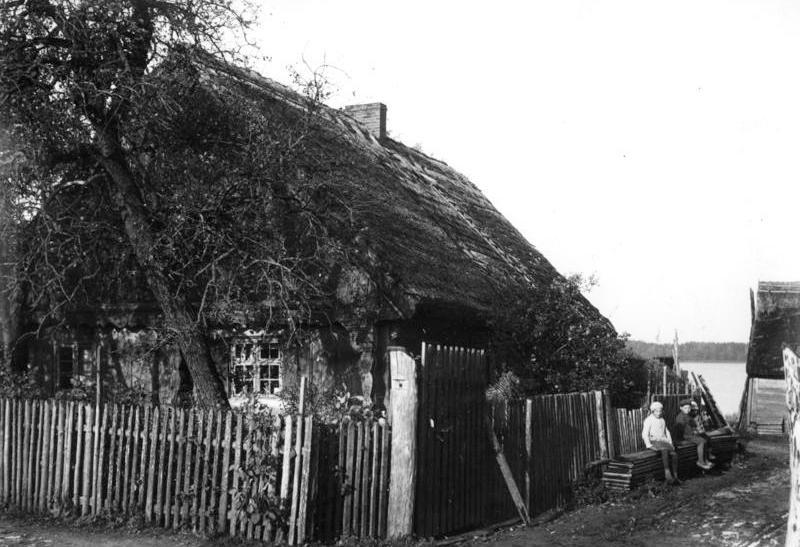
Figure 1.--Here we see a Masurian farmhouse in East Prussia, now located in Pioland. Notice the lake in the background. Source: Photographer: A. Frankl. Source: Bundesarchiv B 145 Bild-P017317. |

|
Masuria (Mazury/Masuren) is an area in what is today northeastern Poland and southwestern Lithuanioa. Before World War II it was largely located in southeastern East Prussia. It was a beautiful area known for its 2,000 lakes. Geographically it comprises two destinct lake districts formed in the last ice age. The two ares are differently forrested, broadleaved forest in the north and pine/mixed forests in the south. It was in the mid- medieval era and area inhabited by the Prussi people. The Teutonic Order conducted a campaign to conquer the Prussi (11-13th centuries). It took two centuries, but the Order suceeded. Many of the Prussi in the process were killed, some survivors retreated to the forrests. They were eventually largely killed by ther Poles who began moving into the area. The area was thus poulated largely by Slavic Poles, buth Germans and other Europeans also moved into the area. People in Masuruia came to speak a destinct Polish dialect--Masurian. After the creation of the German Empire (1871), ethnic politics became a major issue in Prussia. Germans (especially East Pruussian landowners) were concerned about the large growing Polish population. The Germans at the time the Empire was created, still regarded the Masurians as Poles. Imperial authorities gradually adopted a policy of Germanising the Masurians and separating them from the larger Polish community. The Masurians have been likened to the Wends. Apparently, the Germans achieved some success. We are not entirely sure wh\y the Masurians proved amenable to Germanization. Many Masurians learned German and came to regard it as their principal language. After World War I the League of Nation took responsibility for fixing the Polish-German border. A plebecite was held in East Prussia as provided for in the Versailles Treaty (July 11, 1920). A reported 98 percent of the Masurians voted for Germanhy. Some questions exist about the plebecite, but it seems clear that most Massuriasns at the time identified with Germany. A number of Masurians were bilingual, preferring to speak Masurian at home. Politically the area was conservative, supporting nationalist but non-NAZI parties, but by the 1932 elections, the population voted strongly NAZI. Interestingly, NAZI Party organizers conducted rallies in the Masurian dialect. We note a school at Kischken, a town in Masuria during 1933. When Germany invaded and occupied Poland (September 1939), large areas of Poland were annexed to the Reich. The Germans deported Jews and Poles to the Government General. Despite their Slavic ethnicity, German authorities treated the Masurians as Aryans. When the Red Army moved west into the area, the Masurians generally accompanied the ethnic Germans as they accompanied the retreating Wehrmacht. Those who attempted to remain were deported by Polish and Soviet authorities after the War.
A reader writes, "I don't really know how the Masurians were treated. I have the feeling that the Nazis left them alone (they were busy elsewhere). The attitude towards these people could be compared to the Wends who lived in an area southeast of Berlin and who never had a country of their own, but legally were German citizens, and to some extend the many Poles who had immigrated to the Ruhr and who for several generations worked in the coal mines, but who had become Germans in spite of their Polish family names, Some had changed that too. I know a family whose name used to be Nowak. They changed it to the more German Noack."
One unanswered question is how the NAZIs would have addressed the issue of non-Aryan people in the Reich like the Masurians, Wends, and Germans of non-German ancestry had they won the War. Many Germans had geneological work done diring the NAZI-era. The SS required it. The primasry purpose was to prove that there were no Jewish ancestors. But the NAZIs were intent on a much larger genocide, to kill large nuners of Slavs and reduce the survivors to slavery. This was spelled out in Generalplan Ost. It seems unlikely that Slavic ancestry would not have become an issue after the War in the race obsessed NAZI state.
Navigate the Boys' Historical Clothing German pages:
[Return to the Main Prussian page]
[Return to the Main German regional page]
[German choirs]
[German movies]
[German school uniforms]
[German royalty]
[German youth groups]
[German sailor suits]
[Lederhosen]
[Ethnic]
[Tights]
[Long stockings]
Navigate the Boys' Historical Clothing Web Site:
[Introduction]
[Activities]
[Biographies]
[Chronology]
[Clothing styles]
[Countries]
[Bibliographies]
[Contributions]
[FAQs]
[German glossaries]
[Images]
[Links]
[Registration]
[Tools]
[Boys' Clothing Home]
